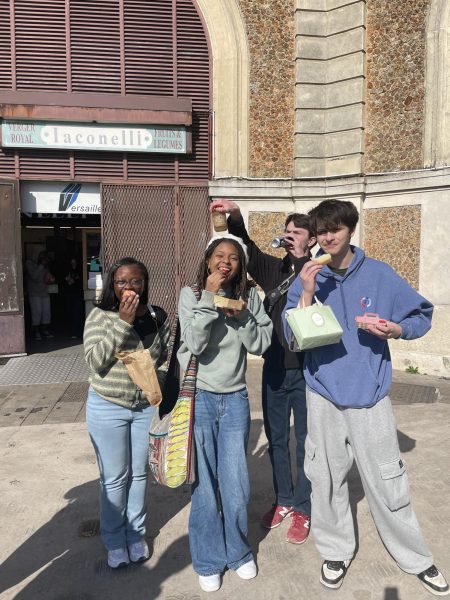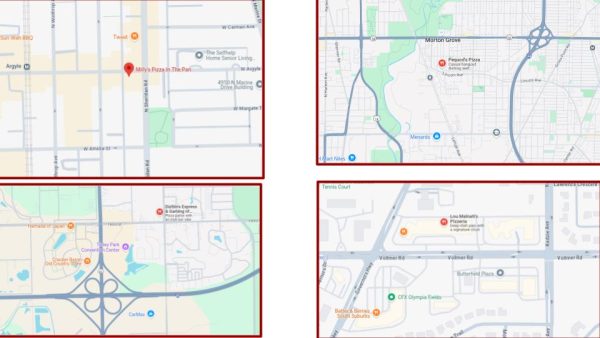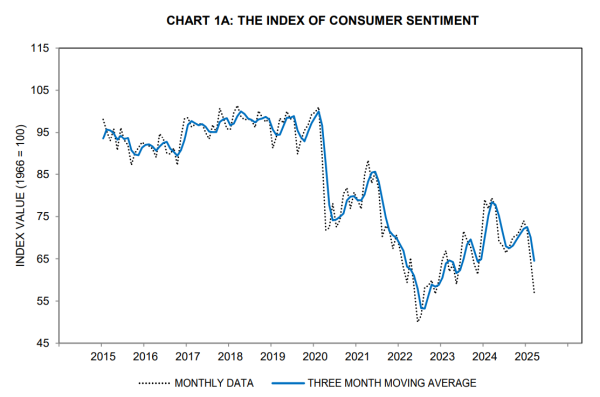Capturing Black History through Music
Judas and the Black Messiah’s inspired album is just as captivating as the film.
“You can kill a revolutionary but you can never kill the revolution,” said Fred Hampton, a mid 20th century American activist and black historical figure. As part of the Black Panther Party of the 1960’s, he was a large contributor to the civil rights movement and liberation of African Americans.
Today, the Black Lives Matter movement has brought Fred Hampton’s ideas and ideologies from the Black Panther Party to light, emphasizing his impact and influence on social issues today.
Hampton was famously known for his contribution to the Illinois chapter of the Black Panther Party as head chairman, as well as his messages that were heavily guided by his beliefs in Marxist and socialist ideologies. The Black Panther Party was a political organization founded in 1966 by Huey P. Newton and Bobby Seale, which was based upon a goal for basic necessities for African Americans. This included land, food, education, housing and overall justice and peace.
As the party spread, Fred Hampton helped found a new chapter based in Chicago in 1968. He quickly became a widespread figure which led Hampton to become a target in the law. He was consistently under surveillance by the FBI until his tragic death in 1969 where police raided his home and shot him to death. The party stayed afloat until it’s ultimate collapse in 1982. However, it’s cultural influence in modern days has appeared regularly throughout the years, in music, movies, television and more.
“Judas and the Black Messiah,” directed by Shaka King, illustrates a story of betrayal and violence between Fred Hampton (played by Daniel Kaluuya) and William (Bill) O’Neil (Played by LaKeith Stanfield). It dives into a detailed inside scoop into the life of Fred Hampton and the Black Panther Party, as well as its members and contesters. The film takes place In late 1960’s Chicago where the FBI hires 17 year-old Bill O’Neil to work undercover for the Bureau as a member of the Black Panther party in order to infiltrate the party and it’s leader Fred Hampton.
The film’s cinematography and overall production helps effectively portray this story to the audience. However, the album inspired by these events undoubtedly creates a much larger project and platform to tell the history of black oppression in America.
The “Judas and the Black Messiah: The Inspired Album” features an incredibly wide range of black artists to tell a personal narrative of issues, politics and oppression in the African American community. It highlights a variety of rap and R&B concepts with artists including Jay-Z, Nas, Nipsey Hussle, Gherbo, H.E.R, A$AP Rocky and many more. The tracks give a voice to each artist where they provide their own individual and unique views on black liberation politics, an obvious theme throughout the film. The combination of upbeat Chicago drill-rap and slow tempoed R&B creates the diversity within sounds. This diversity helps guide the film through a plethora of emotions, and ultimately creates various images and perceptions seen within Fred Hampton and the Black Panther Party.
The drill-rap components seen from artists such as Gherbo, Lil Durk, Polo G and Pooh Shiesty provide a much more modernized way of telling the story of “Judas and the Black Messiah.” Incorporating a contemporary ambiance within the portrayal of historical events and people helps not only to appeal with the younger audiences, but proves a sense of solidarity between the present and the past. It displays how many issues from the past are still seen in today’s society.
In Lil Durk’s track “On Your Mind,” he talks about the failure within the inner cities and how there is no telling what is on the mind of people around him. He says “A trench baby waking up to the killing on his mind,” depicting the youth within these neighbourhoods and the desensitivity to murder within their communities where they grow up. This offers Durk’s stance on Black liberation and the problems that must change to succeed.
Gherbo’s “Revolutionary” with feature Bump J, talks heavily about revolution within the black community and the oppression faced throughout history. He says, “We drowning in lessons, and rounded in sessions tryna pound out the sound of oppression,” along with “I’m going all in, like the Panthers I just wanna see us all win.” He relays his message that the black community is drowning in oppression and overall he has a vision like those in the Black Panther party where he wants to see African- American’s succeed and “win” in life.
NAS and Rakim both contribute to the more old-school sounding rap within the album, as they were heavy in the 80’s to 90’s rap scene. Their presence appeals to older generations, making this project one of all sounds and genres. Rakim takes it back with a more classic and old school sound in “Black Messiah,” a bonus track. He raps about the history and life of Fred Hampton and the Black Panther Party. He portrays imagery through his lyricism about oppression and details about the movement.
Taking a look at the R&B components, artists like H.E.R, SiR, A$AP Rocky, Saba, Kiana Lede, BJ the Chicago Kid and Smino all appear on the project. The R&B sound contributes to the mix between the various sounds, emotions and feelings throughout. H.E.R and Kiana Lede create a beautiful mix of a feminine perspective. I was, however, slightly disappointed when I found out that they are the only two women featured in the project. I think that the addition of more female voices would have added much more to the entirety of the album.
In H.E.R’s track “Fight For You”, she speaks about freedom and its place within black society. She says “Freedom gon’ keep us strong, freedom if you just hold on, freedom ain’t free at all.” Here, she explains the differences of freedom and how it keeps African Americans strong, but yet doesn’t necessarily mean that they are truly free. Her perspective of white America’s definition of “freedom” is that it’s not synonymous with the black community, and this leads to the ultimate disconnect between Constitutional freedom and oppressive freedom. Personally, this is one of my favorite songs on the soundtrack because of its classic sound and message.
Smino and Saba’s track “Plead the .45th,” a play on words referring to a .45 caliber firearm, dives into Chicago gun violence and police brutality. Saba says, “A couple of em’ killed by the badge, at ease. This is a war, never had no peace. They pulling me over, harassing me.” Saba explains the tragic reality of police brutality and its effects, comparing it to a war. The entire song really describes this notion of the evil within black inner cities and resentment to law enforcement. This is also one of my favorites on the soundtrack for it’s jazzy R&B sound, and the passion felt in its lyricism.
In all, “Judas and the Black Messiah: The Inspired Album” is an absolutely beautiful project, illustrating individual perspectives and personal connections to issues within the black community. The variety and balance of all the genres and sounds throughout the album is unique, and helps tell the story about race in America. Although the lack of many female voices in the project, the overall composition and subject matter is enough to place this album at a solid 9 out of 10 on the scale. I recommend this to anyone looking for an album that is rich with musical visuals and imagery within the songs, or to anyone looking to learn more about black history and issues in today’s society.






